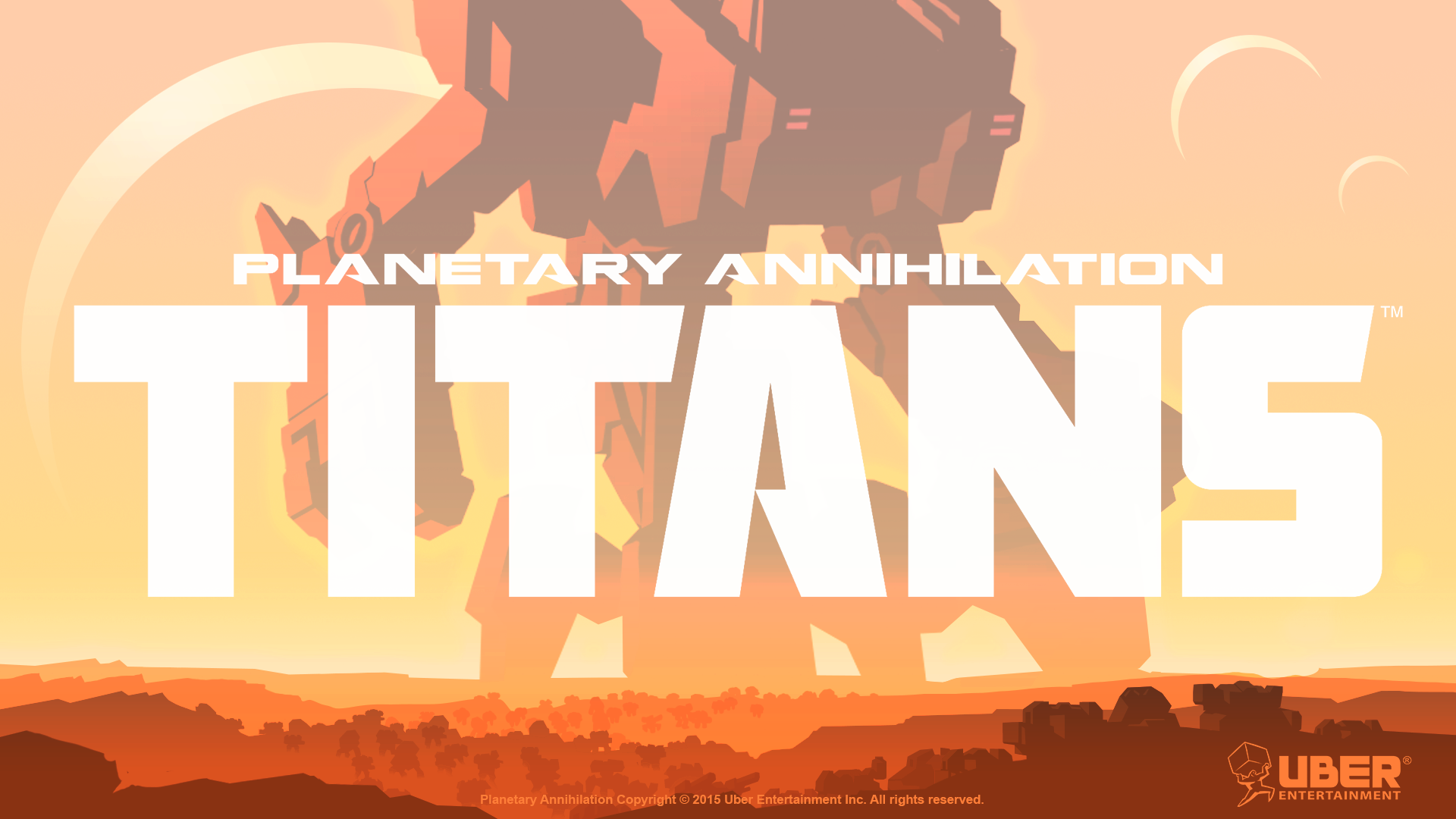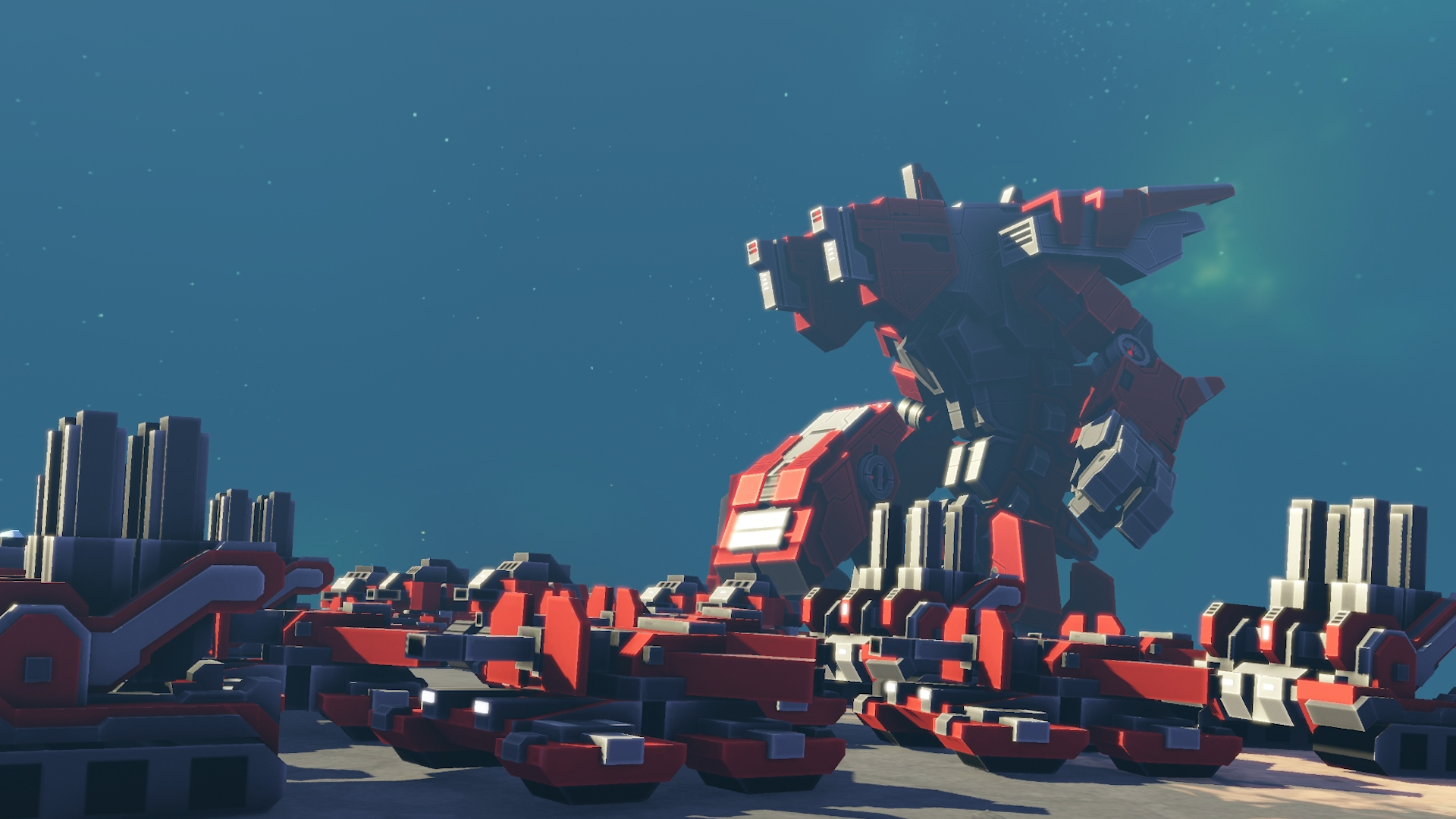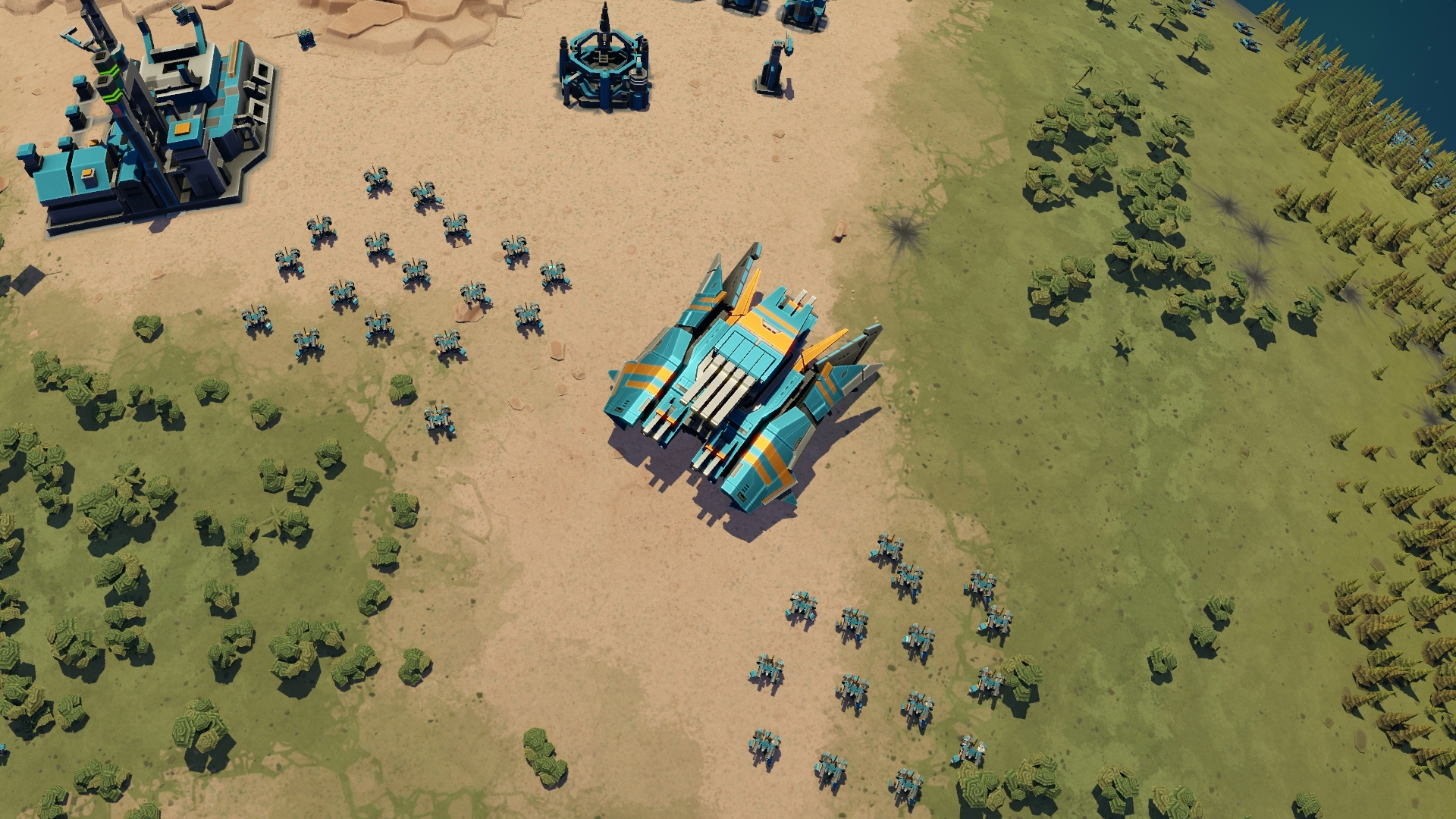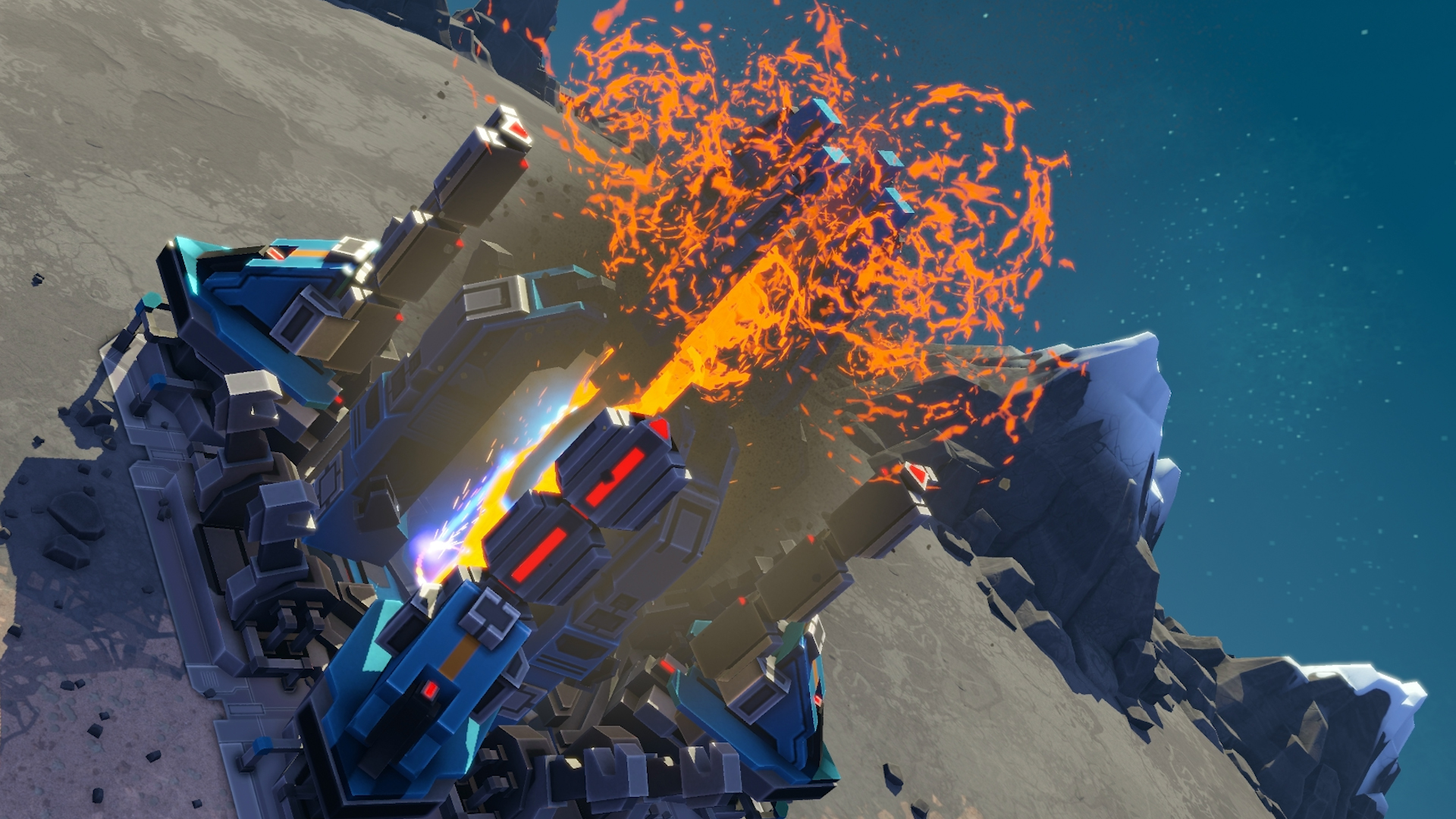
Planetary Annihilation always sounded irresistible. It was going to be an evolution of the Supreme Commander series, and its scale was going to be so colossal that moons and planets themselves would be used as weapons.
When it came out, however, reviews were generally mixed. The procedural map generation created battlefields that were as flat and featureless as a dining room table. Controlling the action on multiple, "Little Prince"-sized planets was difficult and disorienting. There were bugs everywhere, and the tutorials were of poor-quality. Planetary Annihilation's flaws were of a scale to its ambitions, and while it developed a passionate following, it always felt like there was a better game somewhere inside Planetary Annihilation, buried beneath a poor interface and a hurried release.
A year later, and Uber Entertainment have unearthed that better game. Planetary Annihilation: Titans comes out today, and while the enormous super-units are what give the expansion its name, it's the plethora of small, thoughtful changes that make a bigger impact than any super-weapon.
You can't accuse it of being a "paid patch," either. Titans is absolutely free to everyone who backed the original Kickstarter, and people who already own Planetary Annihilation will be able to buy Titans at a substantial discount.

Lessons learned
That's because the team at Uber who worked on Titans understand that the original game fell short of the mark. "We had a lot of goals, and we heard from a lot of people that that original release was rough on Planetary Annihilation," producer Jeremy Ables said. "We tend to agree. There was a lot of stuff that we wanted to get into the game that we just couldn't, in reality."
Uber embarked on a two-stage plan to make Planetary Annihilation into the game they'd promised, if not a better one.
"What we did was we spent the last 10 months just creating updates that added everything we were trying to get into Planetary Annihilation," Ables said.
Keep up to date with the most important stories and the best deals, as picked by the PC Gamer team.
That meant fixing or improving things based on community feedback, reviews, and the developers' own evolving vision. The outcome of this process is a version of Planetary Annihilation that's a lot more playable and features a lot more variety than the launch version. That's all come to Planetary Annihilation via patches and updates.

"And the stuff we heard that wasn't on that plan is what became Titans," Ables said. "We expanded the unit roster, we flushed out orbital gameplay so it didn't feel so empty in space, we added giant Titan class units, which is what were called in the past Experimentals. We've gone through and added new gameplay modes. The ability to add new terrain to maps so that they have choke points and elevations and what not. And all of this was pulled directly from either reviews or conversation with the community."
Coming to Titans after roughly a year away from playing Planetary Annihilation, it's a striking change. I played it before I talked to the developers, and had a couple notebook pages filled with new things that I didn't remember being in the game at launch. Pop-up notifications that told me when my units had scouted an undiscovered enemy base, or found their Commander, or when one of my factories was under attack. There were planets with vast oceans where the previously irrelevant naval units suddenly reigned supreme. Or there's the way the game simply looks a little more epic and a little less comical: zoom-out and the smallest bots become less than specks on the map, while the most powerful buildings and units are visible from high orbit and cast shadows across entire continents.
Some of it, like the oceans and rebalanced navies, had been fixed via patches to the base game. But a lot of those subtle gains in usability are new to Titans.
"That was a challenge that we had on Annihilation," art director Steve Thompson said, when I asked about how much more playable the game seems. "How [do you] navigate all that? In Titans, we've come up with some pretty awesome techniques for jumping from planet to planet with a picture-in-picture notification system. If you're in combat on another planet, it'll bring up a PIP and you click on it and it'll bring you right to the action. So you're jumping around multiple planets in the solar system, and it's pretty damn cool. I find it much easier to navigate."

The maps themselves are more interesting, too. There's actual terrain that you have to utilize or overcome. Some starting location let you set up a base on a large hilltop that forces opponents to assault up a ramp with no line of sight. Others are separated from each other by a series of hills and canyons that are perfect for setting-up choke-points.
"We've added a bunch of maps with custom-built terrain to the actual roster," lead designer Tom Vinita said. "So you have a human hand placing stuff, and this is augmented by the new terrain features that are in Titans. So we have the ability to setup very clear plateaus with higher-ground advantages to actually set-up very intuitively for players to actually build a base on."
All of these changes make Planetary Annihilation a far, far better game than it was at launch, and that's even before we get to the new units, the Titans themselves.
"All of these changes make Planetary Annihilation a far, far better game than it was at launch."
The most important thing the Titans do is take advantage of the fact that Planetary Annihilation takes place across multiple planets. They are enormous, towering over hemispheres and dwarfing even the largest of the regular advanced units. They are, as you'd expect, tankier and more heavily-armed than anything else on the battlefield. But they also create a more interesting late-game.
Late-game Planetary Annihilation could be a little frustrating because, if you didn't expand to other planets quickly, making an assault against an entrenched enemy was infuriatingly difficult. Their defenses smothered transports, and unless you could set up a teleporter somewhere in secret, it was hard to get an army over there to establish a foothold, so a lot of my games would devolve into super-weapon standoffs. Now, there are Titans that will do things like destroy planets outright once they are built, like the Ragnarok. Or there's the Helios, which will hover in orbit and open a teleportation gateway directly to a planet's surface, letting you blast through planetary defenses and onto the surface. There are a lot more ways to storm an enemy-held planet, rather than simply trying to destroy it with an asteroid or blanket it with nukes.

It's undeniable that Planetary Annihilation: Titans (and the updates Uber have done for the base game since it came out) have made Planetary Annihilation a much better RTS. I've enjoyed playing Titans a lot more than I ever enjoyed the original game.
But Planetary Annihilation still struggles to justify itself as an improvement or continuation of the games that inspired it. At heart, Titans is an expansion designed to make Planetary Annihilation more like Supreme Commander. When I listened to our interview again, I noticed that Ables kept calling the Titans "experimentals," the name that Supreme Commander gave its super-units. It's a natural mistake: Titans spends so much time re-creating parts of Supreme Commander that it invites these comparisons. But at the end of a long weekend with Planetary Annihilation: Titans, I'm not sure whether next weekend will find me playing Titans, or reinstalling Supreme Commander.

